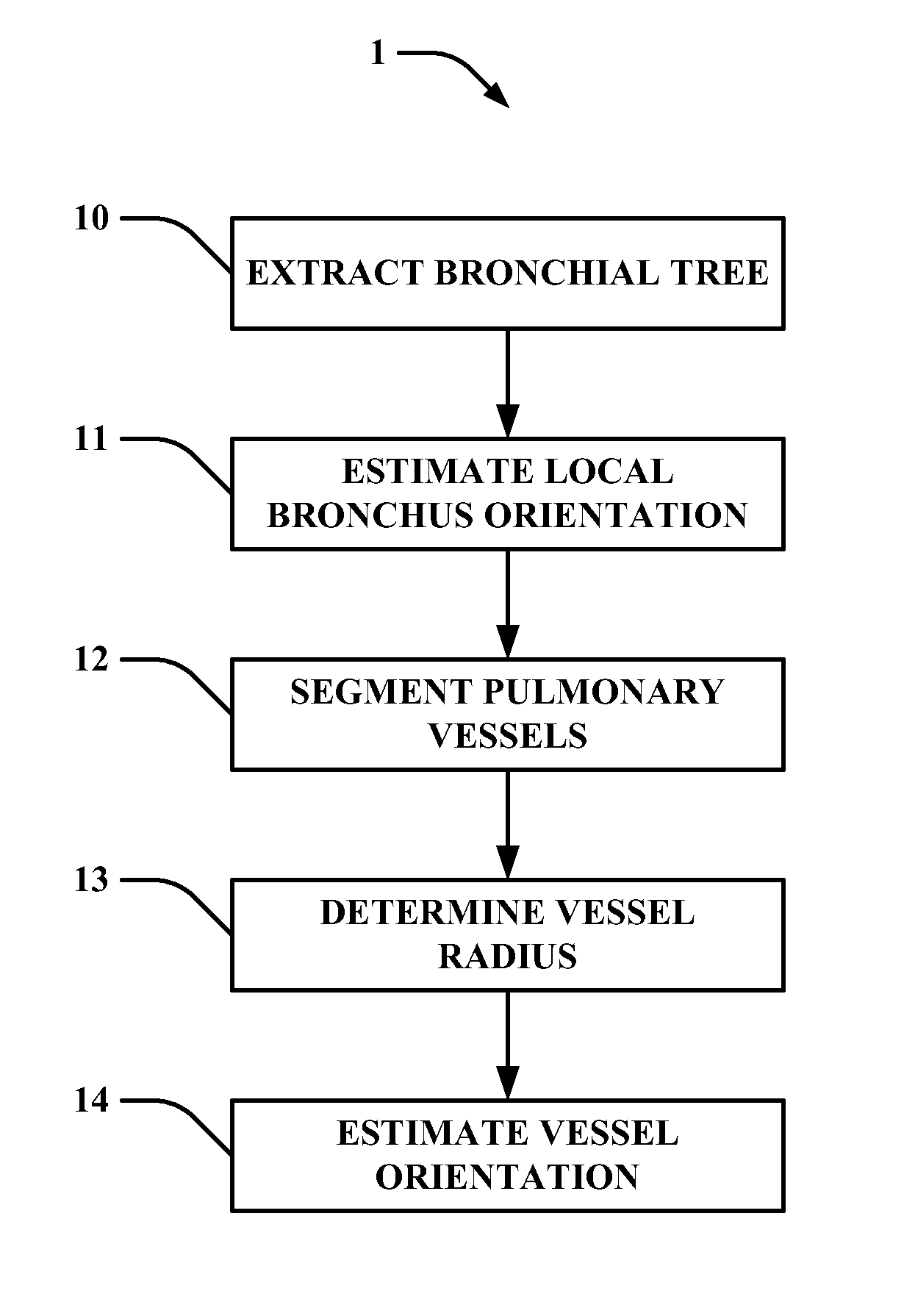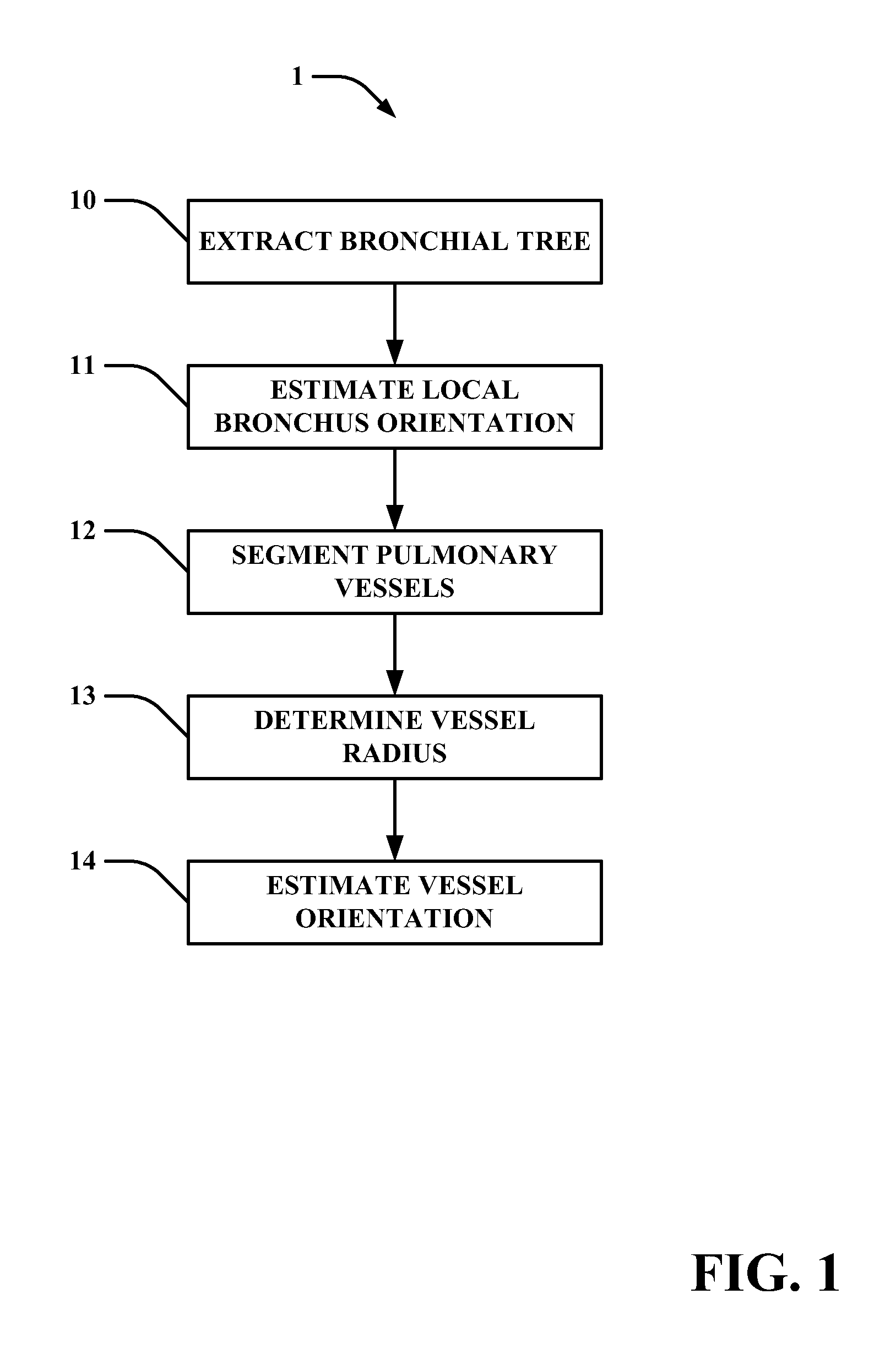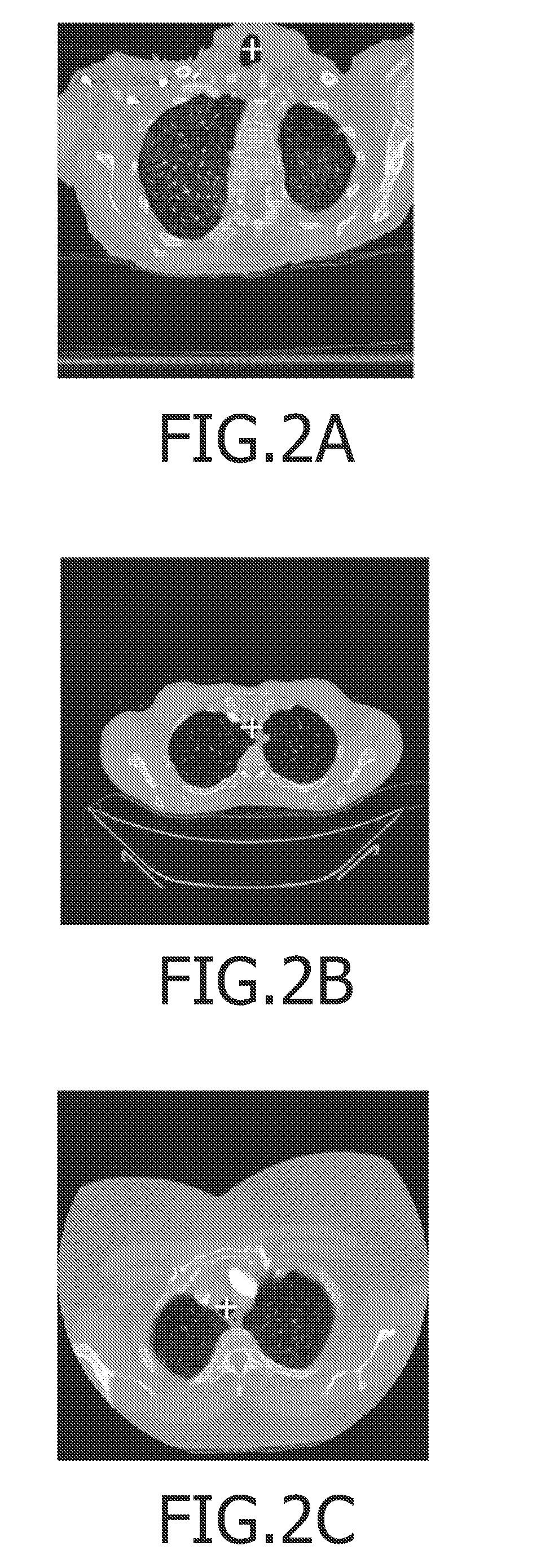Method of automatic extraction of the pulmonary artery tree from 3D medical images
a 3d medical image and automatic extraction technology, applied in the field of medical imaging, can solve the problems of difficult to distinguish pulmonary arteries from veins, inconvenient clinical practice, and inconvenient us
- Summary
- Abstract
- Description
- Claims
- Application Information
AI Technical Summary
Benefits of technology
Problems solved by technology
Method used
Image
Examples
Embodiment Construction
[0029]The following description focuses on an embodiment of the present invention applicable to a Computer Tomography (CT) system and in particular to Multi-Slice CT Data. However, it will be appreciated that the invention is not limited to this application but may be applied to many other imaging systems, including for example Magnetic Resonance Imaging (MRI) systems, 3D Ultrasonic (3D-US) systems, etc.
[0030]Below, an automated method for the extraction of the pulmonary artery tree from multi-slice CT data, making use of the tracheobronchial tree, is described. Having the bronchial tree and the accompanying arterial tree available these trees may be used for a joint visualization, e.g., in a virtual bronchoscopy application. Bronchial and arterial diameters are measured fully automatically along both trees. Positions where the ratio of these radii exhibits unusual values may be marked in a display and suggested for further assessment by the radiologist (see e.g. white dots / markings...
PUM
 Login to View More
Login to View More Abstract
Description
Claims
Application Information
 Login to View More
Login to View More - R&D
- Intellectual Property
- Life Sciences
- Materials
- Tech Scout
- Unparalleled Data Quality
- Higher Quality Content
- 60% Fewer Hallucinations
Browse by: Latest US Patents, China's latest patents, Technical Efficacy Thesaurus, Application Domain, Technology Topic, Popular Technical Reports.
© 2025 PatSnap. All rights reserved.Legal|Privacy policy|Modern Slavery Act Transparency Statement|Sitemap|About US| Contact US: help@patsnap.com



